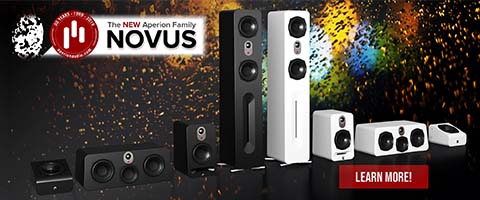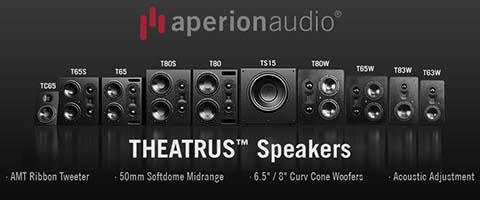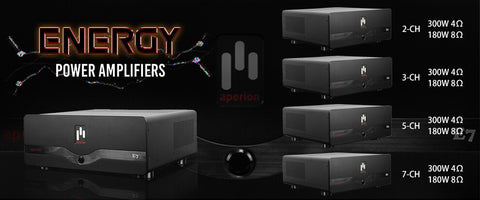The subwoofer in many respects is the second most important speaker in your home theater behind the center channel. Without a subwoofer, or “sub”, you won’t get the visceral “punch you in the gut” feeling that a home theater equipped with powerful bass can deliver. Because of this, a sub goes a long way to putting you inside the action of a movie and making it seem like that much more of a real experience. Here are a few tips to optimizing your sub and ensuring that it brings the boom when it needs to, but also doesn’t overwhelm your other speakers (or your neighbors).
Location, Location, Location
To start off, you need to determine where in your room you want to place your subwoofer. Pretty much any location in the room will produce bass that will sound like it’s coming from your other speakers. However, that doesn’t mean that you can place the subwoofer just anywhere in your room. The quality of bass and how seamlessly the bass integrates with the other speakers are both affected by the sub’s location. The physics of what happens with long waves in rooms is complicated – reflected waves arriving later than non-reflected waves, reinforcing or canceling each other out, other waves doing funny things just because they happen to neatly fit in the room, and more. The result is a pattern of bass-loud and quiet zones distributed throughout your room that will differ for every bass frequency. The key is to ensure that where you sit is not in one of the quiet or “dead” zones of the room.
Of course placing speakers in your living room can be a process of compromise with other “interested” parties. Where your subwoofer eventually ends up will affect how evenly the bass gets spread throughout the listening area, how much bass is produced per watt of power, how well its sound waves integrate with those from the rest of your speakers and, of course, whether you like its placement in your home theater. Of course you want the best possible sound. But your wife is right: your subwoofer isn’t making sound most of the time – usually it’s furniture. So unless you want to sleep in your home theater, you may want to take room aesthetics into account. You may also want to consider things like where you can plug it in and how hard it will be to run the wire from your receiver. Here are the most important points to remember when placing your sub:
- Avoid placing your subwoofer within a couple feet of the main listening position to keep it from being too loud in comparison to the rest of your system.
- Try to keep the subwoofer on the same plane as the front speakers. If this just isn’t possible, avoid placing the sub behind the listening area.
- Unless you like boomy bass, keep subwoofers at least two feet away from corners.
-
Using two subwoofers creates a more level bass throughout the room. This way, the pattern of bass from one subwoofer will be different than from the other and likely to even-out the combined bass distribution. This will fill your room with bass and hopefully even out the “dead zones.” Put them in non-similar places relative to walls and open areas. Non-symmetry is good for bass.
One interesting tactic to placing your subwoofer is the “crawl” method. Keep in mind this method will give you optimal bass response for one sitting position and may not have good results throughout the room. To do this, place your subwoofer right on the couch or chair where you’ll be primarily sitting. Next get down on all fours and crawl around the room. Yes, really, this mimics the eventual placement height of your subwoofer. Once you get to a spot where the bass is robust, loud and well defined without any muddiness, mark that spot and place the subwoofer in that location. When you sit where the subwoofer previously was on your couch or chair, you should hear the same sound quality.
Getting the Most Bass With the Least Power
Yes, we said to avoid placing your subwoofer in a corner to keep it from sounding to boomy, but there are situtations when you may want to place your sub in a corner. Each room boundary (wall, floor or ceiling) that is within a foot or two of your subwoofer will increase the power of the sub by four times. Close to three room boundaries results in (theoretically) 64 times the bass energy when compared to a subwoofer suspended in the middle of the room! So if your subwoofer is underpowered for your space, you may want to consider putting it in a corner.
Subwoofer Amp Settings
Powered subwoofers, like our Bravus subs, have some controls you’ll want to set properly. Take a seat in the viewing area and employ a helper to do the grunt work.
Amp Voltage: Making sure the amp voltage is set properly is very important because the wrong setting can fry your sub amp in a matter of seconds. Here in the United States, the standard wall outlet voltage is 115V. If you are overseas, you may have to use the 220V setting, although this varies by country.
On – Auto – Off: We recommend the “auto” position so your subwoofer powers down when it is not in use, which saves power as well as amp life. There usually will be an indicator light that is green when the sub is active and then red when it has gone into standby or sleep mode. In the “on” position, the subwoofer is always active. If your subwoofer is intermittently firing it may not be getting enough signal to stay on and could be going into standby when it shouldn’t. This isn’t common, but if your sub is cutting out, you may have to use the “on” mode.
Crossover Frequency/Bypass
- If you’ll be using the crossover built into your receiver (recommended): Use the “bypass” switch if your subwoofer has this feature. Otherwise, turn the “crossover frequency” to the highest possible setting. The lower crossover setting in your receiver will take priority.
- If your receiver does not have a built-in crossover (or you’re not using it): Your front left & right speakers extend down into the bass but begin to peter-out at some point. This frequency should be specified in the speaker’s owner’s manual or on their website as the lower limit of the speaker’s range. For the subwoofer, we recommend a crossover setting of 80 Hz, although if you wish, you can go up to 100 Hz, but not over. Settings above 100 Hz and will allow your ear to locate the subwoofer (and you don’t want that).
Phase and Volume or Level Settings
- If there is a phase switch or knob, listen for the setting that creates the tightest and loudest bass at your listening position. Sometimes, depending on the qualities of your room, either setting will sound the same. If the subwoofer is in the same plane as the front speakers, the “normal” or “0 degrees” position is usually right.
- Adjust the volume or level until the bass level blends in with your other speakers. The best way to do this is to use music that has a consistent bass signal and adjust the knob until the output of the subwoofer is at a similar volume as your other speakers. If you like your movies to be a bit bass heavy feel free to bump up the subwoofer a bit. For many subwoofers, the “12 o’clock” position on the volume knob is the sweet spot.
Once you’ve hit your ideal settings, live with them for a week or so. After that, if you’re still happy, you’ll probably never have to touch the settings again
Room treatment
This is a big topic. We could spend weeks addressing this important and often overlooked subject. The main thing to know is that normal rooms can be made to work well using ordinary furniture, like couches, rugs and bookcases that effectively absorb and scatter the sound.
Hooking Up Your Subwoofer
If your receiver has a subwoofer output:
- Run a cable with the appropriate plugs on each end (sometimes called RCA plugs) from the receiver’s subwoofer output to the subwoofer input labeled something like “sub input”, “line in” or “low-level in”. It is best to use a shielded cable for your subwoofer so other pesky signals don’t worm their way into your precious bass.
- If this cable encounters household wiring, have it cross at a 90-degree angle.
- Most subwoofers have both a left & right input. It usually doesn’t matter which one you use. Some people will buy a “y-adapter” or “splitter” so that a single cable can feed both subwoofer inputs. In fact the subwoofer cable that we sell already has a built in y-adapter to ensure you can utilize both inputs and get a little more voltage to the sub.
- If you are using more than one subwoofer, you can run the same kind of cable from the subwoofer’s “line out” or “low level out” to the next subwoofer. Alternatively, you can use a male to female y-adapter on the subwoofer output of your receiver and then run two sub cables.
If your receiver does not have a subwoofer output, you will need a subwoofer with speaker wire inputs (usually called “high-level inputs” or “speaker level inputs.”)
- Run speaker wires from your receiver (or your front left & right speakers) to the subwoofer’s high-level inputs. Don’t worry about speaker wire quality as you are merely sending a line level signal to the sub which will then be amplified when it reaches the subwoofer. The high level inputs are not a lower quality input, but they will not allow you to use the crossover feature that’s built into most home theater receivers.
- Since speaker wire is typically unshielded, it’s best to steer clear of household wiring. If it does need to encounter household wiring, have it cross at a 90-degree angle. If your subwoofer emits a buzz or a hum, this may be the culprit.
- When using more than one subwoofer, its input wires can originate from the receiver, front left & right speakers or the inputs of the first subwoofer. Do not use the “high level outputs” to connect to other subwoofers. We recommend that these high level outputs not be used as they can shorten your sub amp longevity.
In Conclusion
Spending a little time with the placement and settings of your subwoofer will help this crucial component of your home theater reach new lows, and that’s good! We hope this tutorial has been helpful and as always, happy listening!

Complete Your Sound System Solution

Sign up for our newsletter below, and join our social media groups to stay up to date with the latest news and information from Aperion Audio!
 |
 |











 https://www.aperionaudio.com
https://www.aperionaudio.com
1 comment
I want my woofer to hit harder